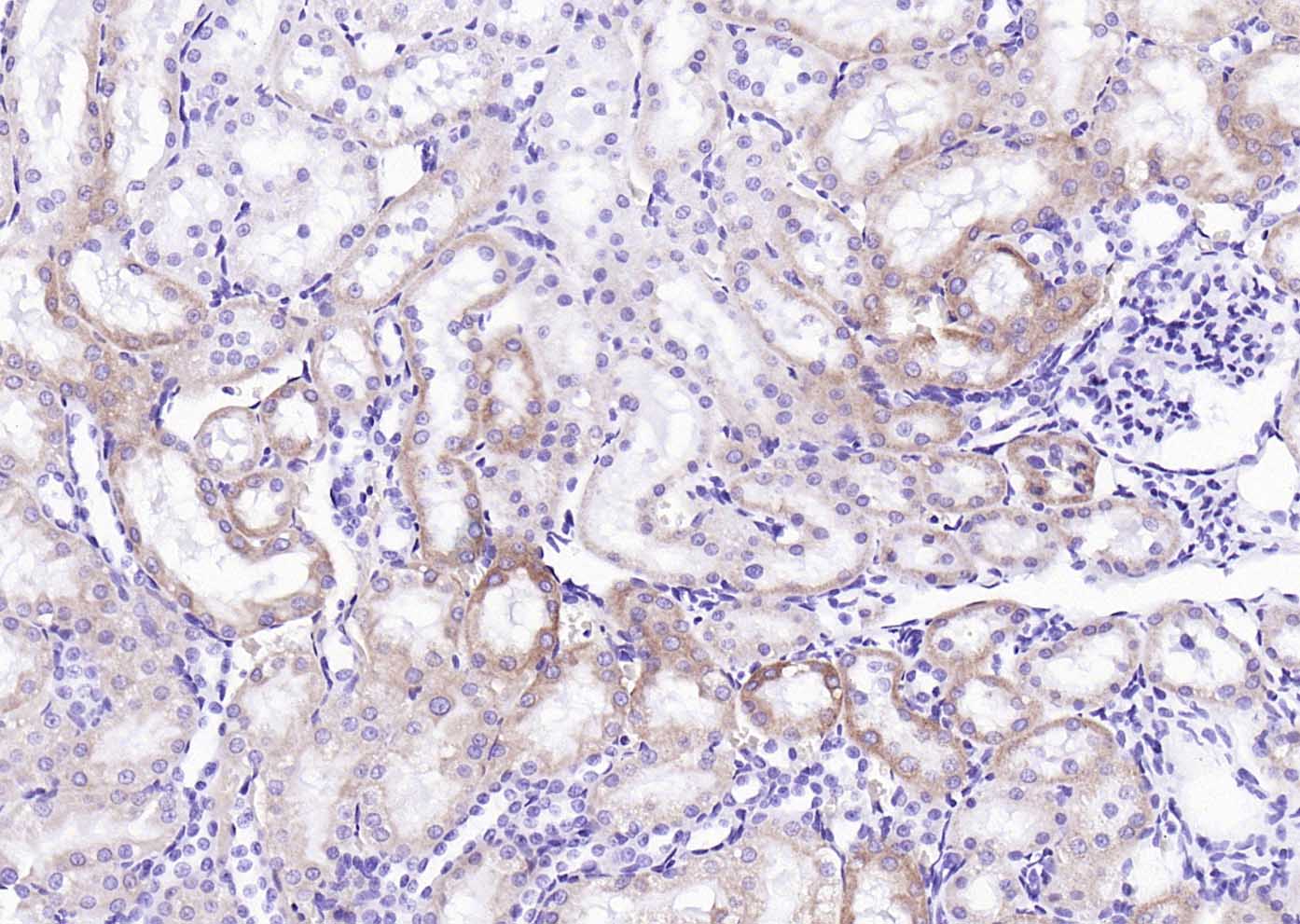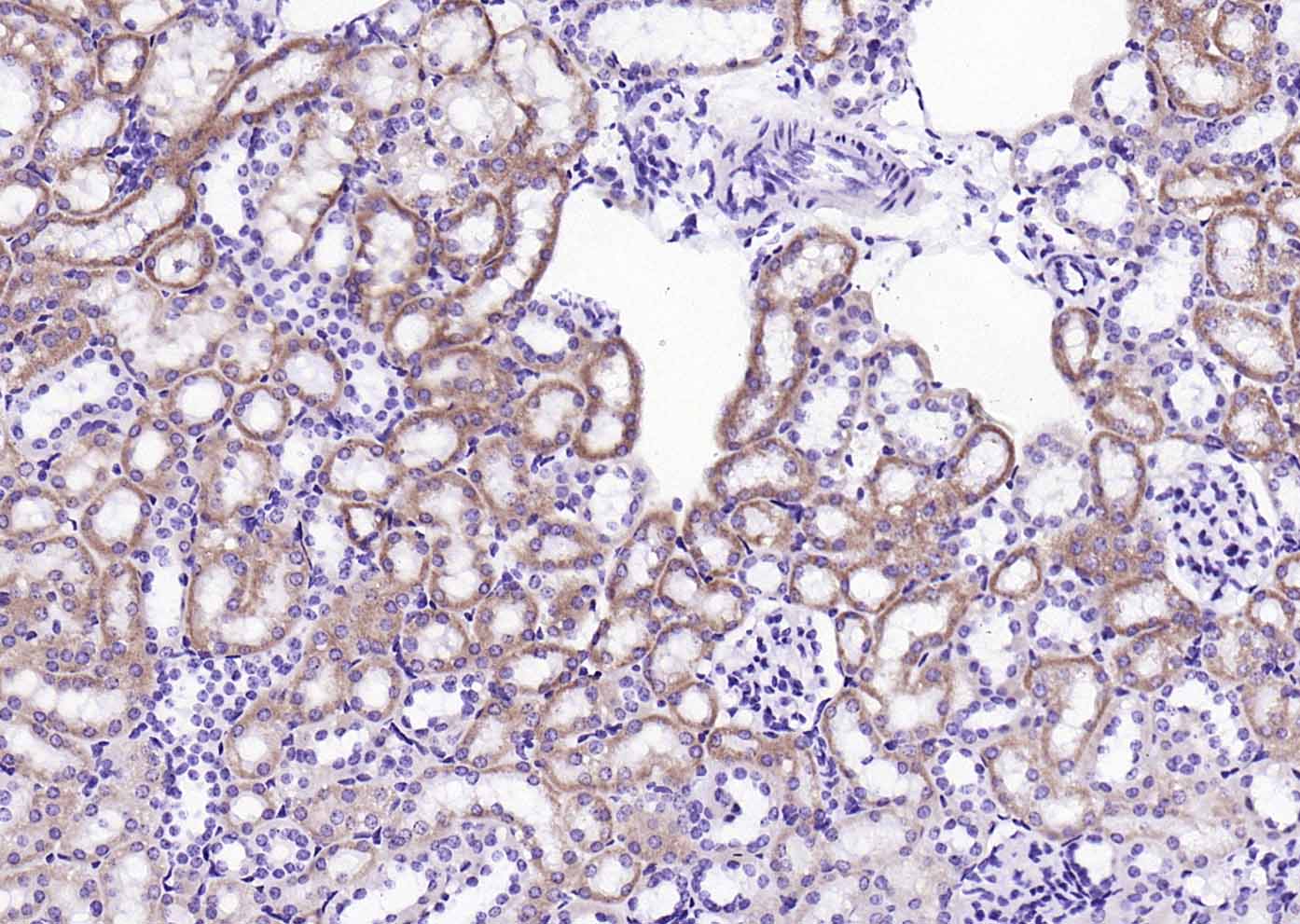
Rabbit Anti-GBA3 antibody
CBG; CBGL1; Cytosolic beta glucosidase; Cytosolic beta glucosidase like protein 1; Cytosolic beta-glucosidase; Cytosolic beta-glucosidase-like protein 1; GBA3; GBA3_HUMAN; GLUC; Glucosidase beta acid 3; Klotho related protein.
View History [Clear]
Details
Product Name GBA3 Chinese Name β葡萄糖苷酶3抗体 Alias CBG; CBGL1; Cytosolic beta glucosidase; Cytosolic beta glucosidase like protein 1; Cytosolic beta-glucosidase; Cytosolic beta-glucosidase-like protein 1; GBA3; GBA3_HUMAN; GLUC; Glucosidase beta acid 3; Klotho related protein. literatures Research Area Cell biology Developmental biology The new supersedes the old Immunogen Species Rabbit Clonality Polyclonal React Species Mouse, Rat, (predicted: Human, Pig, Cow, Horse, Sheep, ) Applications WB=1:500-2000 ELISA=1:5000-10000 IHC-P=1:100-500 IHC-F=1:100-500 ICC=1:100-500 IF=1:100-500 (Paraffin sections need antigen repair)
not yet tested in other applications.
optimal dilutions/concentrations should be determined by the end user.Theoretical molecular weight 54kDa Cellular localization cytoplasmic Form Liquid Concentration 1mg/ml immunogen KLH conjugated synthetic peptide derived from human GBA3/CBG: 151-250/469 Lsotype IgG Purification affinity purified by Protein A Buffer Solution 0.01M TBS(pH7.4) with 1% BSA, 0.03% Proclin300 and 50% Glycerol. Storage Shipped at 4℃. Store at -20 °C for one year. Avoid repeated freeze/thaw cycles. Attention This product as supplied is intended for research use only, not for use in human, therapeutic or diagnostic applications. PubMed PubMed Product Detail CBG is a monomeric enzyme involved in the absorption and metabolism of flavonoid glucosides. CBG is found predominately in the liver, but is also located in tissues such as spleen, small intestine and kidney. Through its catalytic activity, CBG is able to hydrolyze a variety of glycosides including phytoestrogens, cyanogens, and flavonols. Although its catalytic activity extends to many dietary flavonoids, CBG has increased specificity for hydrophobic aglycones such as beta-D-glucoside and beta-D-galactoside. Hydrolysis is inhibited by sodium taurocholate and glucosyl-sphingosine, both of which regulate CBG enzymatic activity. Deficiencies in CBG have been implicated in Gaucher’s disease, a lysosomal storage disease that causes a build up of fatty material in the spleen, liver, lung and kidneys.
Function:
Glycosidase probably involved in the intestinal absorption and metabolism of dietary flavonoid glycosides. Able to hydrolyze a broad variety of glycosides including phytoestrogens, flavonols, flavones, flavanones and cyanogens. Possesses beta-glycosylceramidase activity and may be involved in a nonlysosomal catabolic pathway of glycosylceramide.
Subcellular Location:
Cytoplasm; cytosol.
Tissue Specificity:
Present in small intestine (at protein level). Expressed in liver, small intestine, colon, spleen and kidney. Down-regulated in renal cell carcinomas and hepatocellular carcinomas.
Post-translational modifications:
The N-terminus is blocked.
Similarity:
Belongs to the glycosyl hydrolase 1 family. Klotho subfamily.
SWISS:
Q9H227
Gene ID:
57733
Database links:Entrez Gene: 57733 Human
Omim: 606619 Human
SwissProt: Q9H227 Human
Unigene: 653107 Human
Product Picture
Bought notes(bought amounts latest0)
No one bought this product
User Comment(Total0User Comment Num)
- No comment




 +86 571 56623320
+86 571 56623320
 +86 18668110335
+86 18668110335

